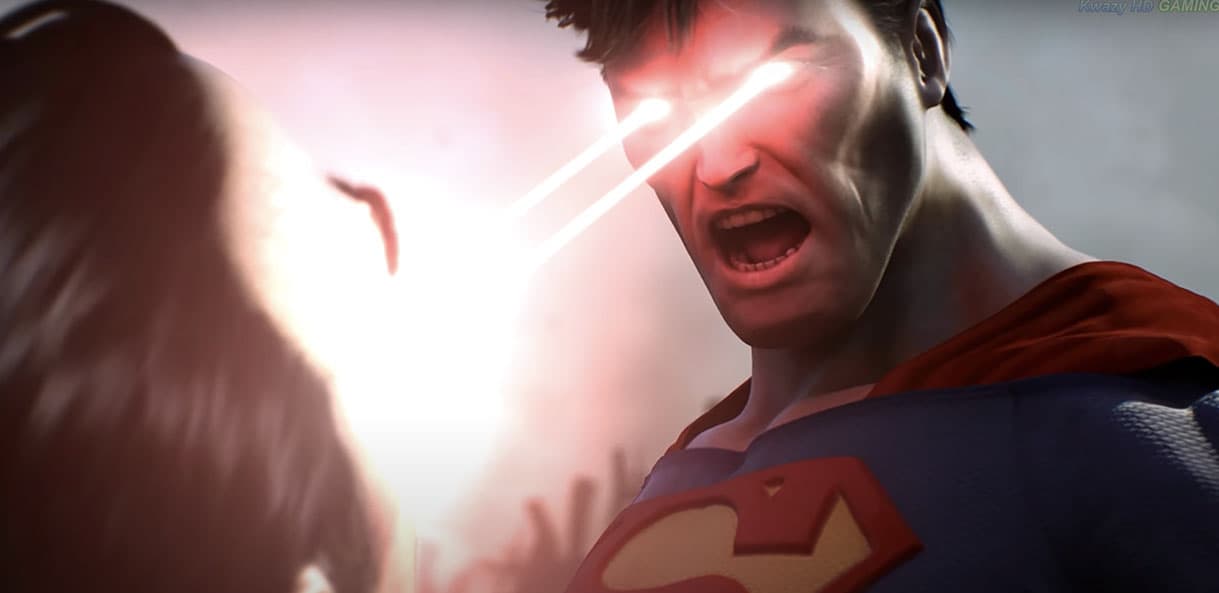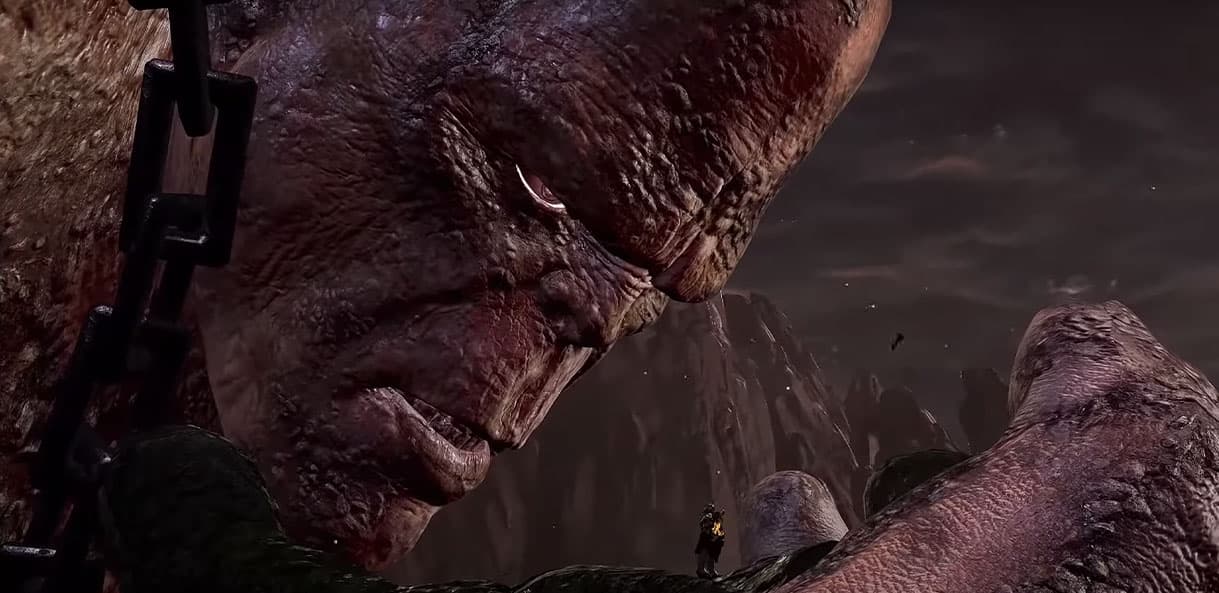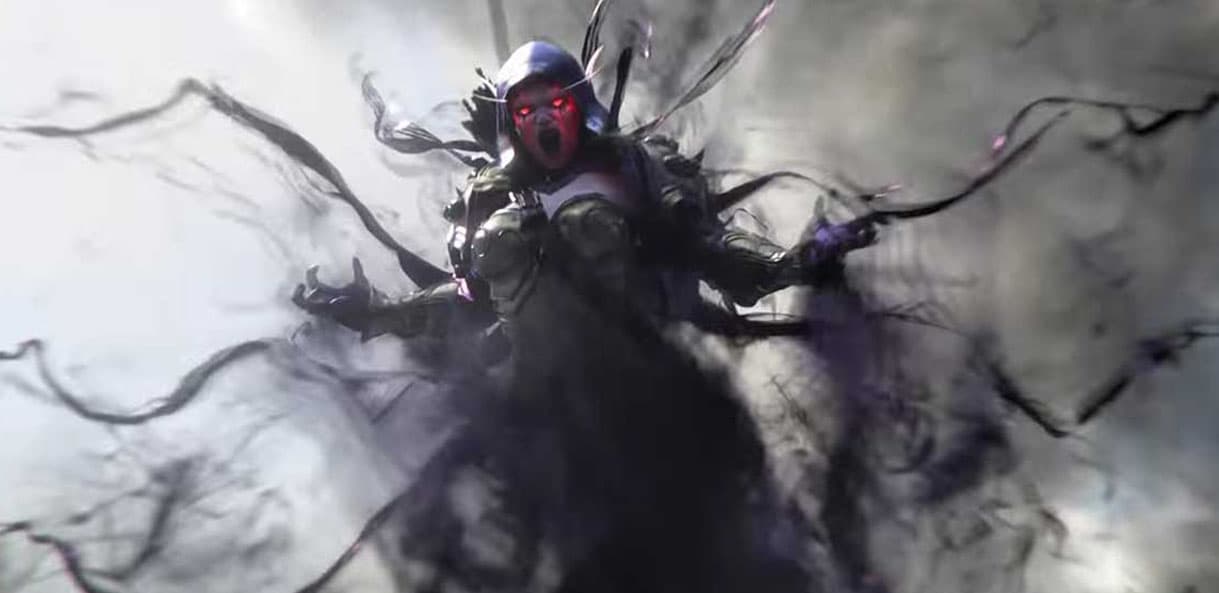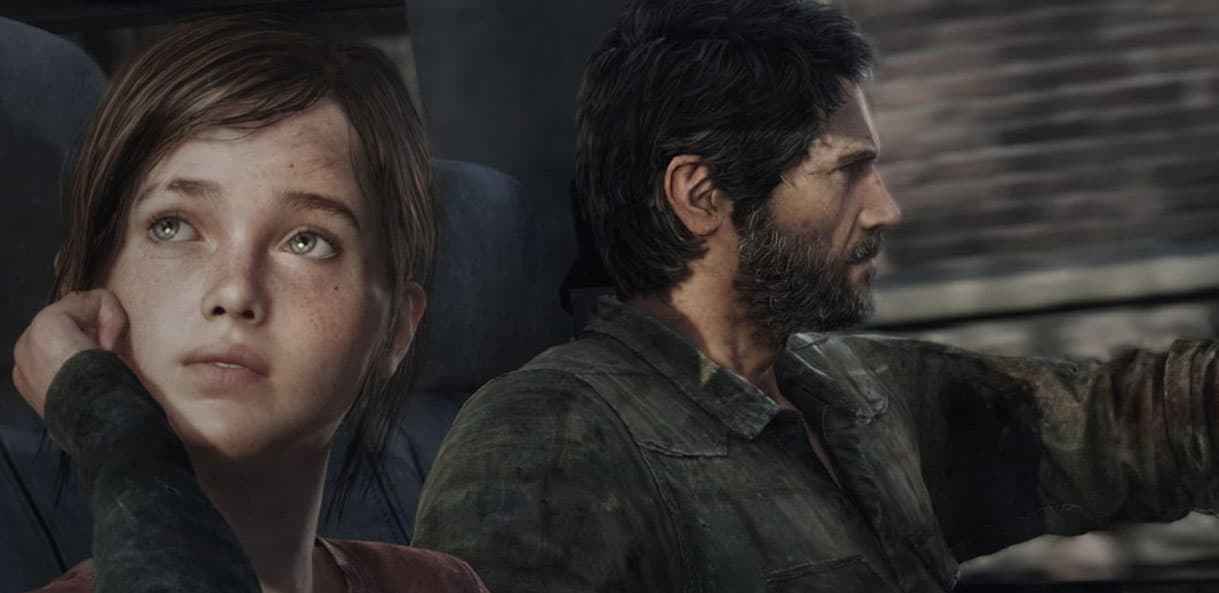First impressions aren't everything, but they're still pretty damn important. Some games, particularly earlier releases, don't even sport intros; but as time has gone on they've grown in prominence as an industry staple, covering full-motion videos, in-game style cutscenes, or segments of gameplay that allow you to take control before you're even hit with a title screen. Intros establish a tone, they give us a taste of what's to come, and are a great indicator of the level of quality you can expect.
There are intros that are good, there are others that are downright forgettable, and then there are those that know how to get the blood pumping. Whether through a visual feast; a rich, thematic plot; or just a nostalgic ride that's stood the test of time, these are the ten greatest video game intros -

There was once a time where comic book superheroes were secluded to the polythene bags and book shelves of geeks. Now, thanks to Marvel Studios and their relentless juggernaut of a film industry, what was once geek is now full-fledged chic, and at this point Iron Man, Captain America and Spiderman are just as much household names as Mickey Mouse and Super Mario. At this point, the superhero thing is a bit tiresome - but hey, at least we don't have to put up with low budget superhero video games for a while.
DC Universe is an MMO adventure game a la World of Warcraft, that puts you in the driver seat of your own superhero or villain, giving you the opportunity to interact with pre-existing DC characters in a sandbox world. The game itself had its issues, but the intro was definitely a step in the right direction for DC. The intro sequence is a well-made FMV that shows the members of The Justice League fighting an array of villains throughout the ruins of a destroyed Metropolis. Both sides take heavy casualties, with heroes and villains alike being killed by one another in pretty brutal fashion, with Lex Luthor eventually coming out on top.
DC Comics is no stranger to mature themes in their stories, but they're usually relegated to stand-alone graphic novels (or the Nolan-verse), rather than mainstream video games, so it was a pleasant surprise to be treated to a much darker tone than what we're used to from our usual superhero fare. The bleaker vision of a devastated DC Universe gives the story some gravitas, and watching Wonder Woman ripping off Metallo's head is pretty awesome, and though the CG animation is already showing signs of not aging well, this action-fuelled intro is still better today than most of the DC Universe's live-action movie adaptations.

Talk about an intro of epic proportions - God of War 3 is an action hack and slash game that continues directly where God of War 2 ended: Kratos and the titans are scaping Mount Olympus to dethrone and kill the remaining Olympian Gods, as Zeus and his siblings look on, preparing for total war. Part cutscene and part playable tutorial; God of War knows just what fans of the series have come to expect and love, with Zeus' narration setting the stage before letting you unleash hell onto a horde of jobbers, finally working your way up to one of the game's first big bads.
For those that played the previous God of War titles in the series, this has been the culmination of all your past struggles, and what a way to kick it off. It doesn't get much more dramatic than duking it out with Poseidon on the back of the titan, Gaea, as she ascends Mount Olympus. This intro heaps upon you wanton levels of mayhem, an in-depth sense of drama, and more lies and deceit than a shakespeare tragedy, making your journey down this mythic rabbit hole all the more tantalising the deeper you go.
At the time of its release, God of War 3 was a PS3 exclusive which showed players and onlookers the sheer leap in technical enhancement one generation of consoles could make. While God of War 2 had some good visual sequences, the sequel took it to a whole-new level, proving to the world that the divide between film and video game visuals was rapidly closing. The cutscene effects were considered incredible for the time, and thanks to a PS4 remaster, they've only gotten better with age.

Though animation powerhouses like Pixar, Dreamworks and Illumination have chosen to embrace the CGI boom when it comes to their productions, there's still much to be said about the power of 2D cel animation, and not many companies say it as elegantly as Toei. You see Toei, and more specifically, Toei Animation Co. know a thing or two about 2D animation, they are after all the talent behind the Dragon Ball franchise; one of the greatest anime series to grace our TV screens. So when it came to bringing their talents together for a video-game intro, you better believe they brought their A-game.
The intro shows the Z-Fighters, led by Goku, taking on some of the most iconic villains from across the TV shows and movies in some pretty slick action sequences. Aside from a few match-ups that could only take place previously in "what-if" conversations, there's nothing incredibly new here, but the intro is just pure, unadulterated fan-service at its very best. For many fans, this was the first time in years that we'd seen these characters animated again since thefranchise ended, so to see such efforts spent on the intro felt like a high-five from Toei directly to the fans, and gave us hope that there could be a future for another animated Dragon Ball (spoiler: there was).
Dragon Ball, Dragon Ball Z and Dragon Ball GT were TV shows that aired from 1986 to 1997, and thanks to the hand-drawn animation style of Toei's talented staff, the visuals of these shows have aged well. Incredibly well. Now imagine what this same company could do with a larger budget, a confident team and plenty more years of experience under their belt. It's no short order to try and convey the light-hearted tone and frenetic energy of the series while also showcasing some of the most beloved characters across the franchise, but Toei seem to have done it with gusto in the short space of 1 minute and 32 seconds.

I managed to avoid World of Warcraft like the plague for the longest time. At first, it was down to sheer bitterness of having to wait for a Warcraft IV release, but then when I realised that was never going to come to fruition, I opted out of commiting to a game that required a subscription fee. Warcraft III gave me insight into a lot of the major character's backstories, enough so that every once in a while I'd dip back into the lore to see what my favourite denizens of Azeroth are up to. Blizzard have plenty of flaws, but when it comes to throwing together a cinematic FMV, they're one of the top dogs.
Wrath of the Lich King, Shadowlands, Warlords of Draenor and even the Heroes of the Storm cinematics were all strong contenders for this spot, but Battle for Azeroth takes the win, just for sheer grandeur. Sylvanus Windrunner has one of the most interesting character development arcs across WoW history, and watching her lead the Horde as Warchief while they're under siege by the Alliance is a pretty gripping sight to see. With The Horde against the ropes in a seemingly unwinnable situation, Sylvanus takes matters into her own hands, turning the tide in a stunning display of skill.
I'm not even a player of World of Warcraft, but seeing Sylvanus single-handedly take down an Alliance siege tower, kill a group of soldiers in banshee-mode, and scream "For the Horde!" to rally her troops gave me the freakin' chills. With the Alliance now on the back foot and the Horde on the cusp of winning, Anduin Wrynn evens the playing field by resurrecting his fallen comrades and follows it with a "For the Alliance!" battlecry of his own. The CGI is incendiary, the lore is cavern-deep and the action is palpable... I believe longtime player, Asmongold put it best when he said "That was really, really fucking good - let's be real. Holy shit".

As an illustrator, I'm a complete sucker for classic animated intros, especially when I don't even see them coming. Musashi: Samurai Legend kicks off with a dynamic intro that features vibrant hues and incredible character designs that come together in a flurry of hand-drawn mania that only Gainax Co. could produce. This is one of those rare instances where I feel the intro is actually far superior to the gameplay itself, as nothing in the game quite matches the pace, tone or energy of the animated opening.
The intro opens with an explanation that the eponymous hero of the game, Musashi, has been whisked away to a mystical land, where he sets out on a trope-filled quest to rescue a series of maidens and defeat an evil corporation. It's nothing particularly groundbreaking story-wise, but it's Gainax Co.'s unique and vibrant style on full display that really whets the appetite for this third-person action game. A series of frenetic action sequences, interspersed with a montage of shots featuring the main cast, suddenly lights up the screen, all set to music to get the blood-pumping.
Musashi: Samurai Legend's intro wears its inspirations all over its sleeve, showcasing all your favourite traditional samurai cliche's: from falling cherry blossoms to one on one duels in the rain, and juxtaposes them against a cyberpunk setting. It's got excitement, humour and style: a trifecta of awesomeness, which is everything a game like this could hope for with an intro, it's just such a shame the game itself feels absolutely nothing like this 1 minute 58 second visual bonanza.

In my experience, Left 4 Dead is some of the most fun you can have in a 4-player co-op video game setting. Left 4 Dead is rife with dark humour, moments of tension and heart-pumping action sequences, and they're presented in all their stunning glory in this finely made intro that preps you for an experience you won't forget. Unlike many horror themed bits of media: Left 4 Dead ensures that the main cast are thoroughly likeable, in no small part to the incredible amounts of detail the animators have paid to the expressions and motion of the character models to help bring them to life.
The intro consists of an FMV that introduces us to our four playable protagonists as they navigate their way through the streets of a zombie-infested city. The sequence does a great job at establishing the personality traits of each of the main characters, giving you a chance to see which survivor you associate most with. It also manages to give you an idea of the items, the environmental dangers and the myriad of special infected you'll encounter, and it does all of this in just 4 minutes and 30 seconds.
Everything about this intro screams cinematic: from the quality acting and the lighting effects, all the way to the use of dramatic cinematography and shaky camera techniques, the intro grips you and refuses to let go. Avid horror fans should even be able to spot the references to other popular franchises, such as the 28 Days Later films. In short - Left 4 Dead thrusts you into its world with a sense of immersion you rarely see outside of the movie industry. Its refreshing, it's thrilling... it's a damn shame there's only one of it throughout the whole game.

Full disclosure - racing games are my least favourite of the game genres (after annually released sports games, of course), so there's something to be said when one breaks into the top 5 of my intros. Though to be fair, Carmageddon is about as much an actual racing game as Super Mario Bros. is a representation of the intricacies of the plumbing industry. Sure there's a route and there are laps like any other racing game, but when destroying the opposition or plowing down pedestrians can just as easily net you a win, there's simply no contest.
Dripping with badass charm, licensed metal music, and that distinct 90s CGI, the Carmageddon intro forces its way through your senses and really preps you for the madness that you're about to have a hand in. As a UK resident, my version of the game was censored, with zombies replacing human pedestrians, but that didn't take anything away from the intro, on the contrary, I quite liked the few additional scenes added in, and the brief narration that led into Fear Factory's bone-rattling Zero Signal. The intro serves as a sort've showcase of some of the deadly vehicles included in the game, ranging from a spiked 4x4, a souped-up Sedan and even a hearse.
Of all the intros on this list, I'd say this one aged the worst, but I'm willing to cut it some slack due to the fact it's one of the oldest games on the list, and one that didn't belong to an established, big-budget franchise. Even today, watching it takes me back to a simpler time, one when total destruction was my juvenile jam, and the idea of running over the flag-waver was the perfect way to round out an unforgettable intro to a "racing game".

You really have to hand it to Naughty Dog, they have somehow managed to bottle the magic of getting you as a player to understand and feel for their characters in an incredibly short space of time. The Last of Us opens with a short, pleasant father/daughter interaction via cutscene, but it doesn't take long for all hell to break loose. The game soon puts you in the driver's seat, allowing you to play as the daughter, Sarah navigating their house and pieceing together that a zombie-esque apocalypse is kicking off.
The way Sarah (and pretty much every character in this game) talks, walks, and interacts with others is so realistic, that it's too easy to become totally immersed. The carnage intensifies as Joel and Sarah escape with Uncle Tommy in his car. The trio start passing through heavily populated areas and inevitably, in all the chaos, crash the car. You then take control of Joel as you carry a scared, vulnerable Sarah through the town, with plenty of near-death moments peppered along the way. The duo finally escape intact, only to get shot at by army personnel, and while Joel comes out unscathed, Sarah gets mortally wounded.
The music, the voice acting, the tension: everything comes together perfectly to create one of the most heart-wrenching moments in gaming history, as Joel can do nothing as his daughter dies crying in his arms. Not going to lie - this one brought on some deep, deep feels, stuff I left locked up since Mufasa died. It feels insane how quickly you completely empathise with these characters, how all of a sudden you can feel gut-punched by the events of the past 15 minutes, with nothing but the title screen and opening credits to soften the blow.

Take a ludicrous plot, add a helping of industrial metal music, smother it in a mixture of cheesy live-action and early 2000s CGI sequences, and voila - you have yourself a Red Alert 2 intro. Running at a bold 3 minutes and 56 seconds, the game opens to an award-winning live-action scene between the US President and Russian Premiere as they exchange barbs over an impending attack from the Soviets. A few quote-filled moments later we're treated to our first look at the true mastermind behind it all; Chief Advisor Yuri, played to perfection by Udo Kier.
What follows is one of the most memorable moments in the entire C&C franchise, as Soviet forces invade the United States with parachute troops, Kirov airships, V3 rockets and even giant squids, all to the sound of Frank Klepacki's thundering Hell March. It's obvious from this moment that Red Alert 2 is dispensing with the subtleties from here on out and just wants to kick your ass into the deep end. The stakes are higher, the action is bolder and the self-awareness is off the scale.
The sequence really knows how to throw the switch from corny to dramatic, and is possibly one of the best examples of music and imagery working in tandem to create a hard-hitting intro. The whole thing can be seen as a best-of-both-worlds moment, as the comical acting and quotes have made just as much of an impact as how exciting the invasion is to watch, though I don't feel that these elements are at odds at all, and just proves how Red Alert 2 manages to balance out bombastic acting and explosive visuals to perfection.

It's 1993: I'm 7 years old, the Nintendo/Sega console wars are battling out the 16-bit era, and the Playstation is nought but a dream. By this point, Nintendo was dominating the gaming industry with the undeniably brilliant Super Mario World, while Sega's own mascot was refusing to go out quietly with the release of Sonic the Hedgehog 2. Up to that point, FMV's were non-existent to me, but when I finally got my own Sega CD and an accompanying copy of Sonic CD, my world was unequivocally rocked.
While I'd at that point felt spoilt simply by impressive intro screens, I was completely awestruck when witnessing Sonic sprinting across grasslands, drilling through boulders and dashing across lakes in all his slick, animated glory. Even by today's standards, the Sonic CD intro is an impressive sight to behold, with the hand-drawn cel animation by Toei gifting the blue hedgehog a level of speed, attitude and character that no other game, cartoon or live-action movie iteration has even come close to.
It's even telling that, 24 years later, Tyson Hesse's designs and animations for 2017's Sonic Mania were directly inspired by Toei's own, and they themselves have rejuvenated what was, until recently, a dying mascot whom many fans had consigned to chilli dog heaven. Many times I've heard it said that Sonic CD is the best of the classic Sonic era, and just as many times I've heard it be said that it's an overrated game that plays second-fiddle to the likes of Sonic the Hedgehog 2, but rarely if ever have I heard anything other than showers of compliments when it comes to the introduction of this divisive game.